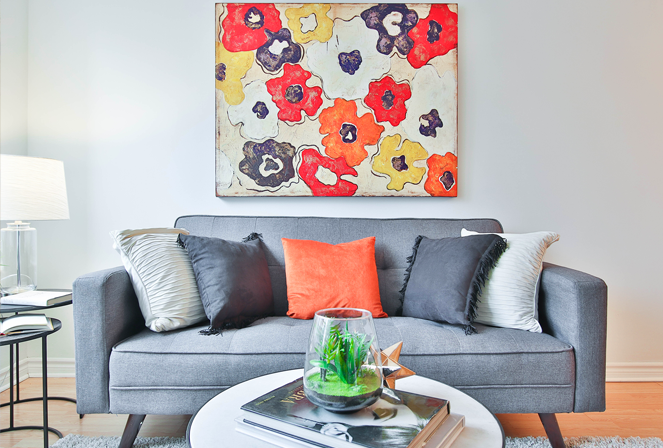
Designing small living spaces can be both a joy and a challenge to decorate at the same time. Whether you are designing your bedroom, a dorm room, or a nice cozy sunroom, you need to balance space issues with your desire to make it as “you” as possible. Because of size limitations, you’ll see everything once you enter the room. For that reason, it’s important to love everything you see!
Follow these five tips when you are designing small living spaces so you can get it right the first time.
Keep it Light
Small spaces are perfect for natural light. Ideally you can position furniture so it doesn’t block any natural light, leaving uninterrupted views of the outside. Window treatments should only be used if necessary, and as much lighting as is reasonable for the room should be added.
Lastly, if your ceiling in the room is light, consider reflecting your light upwards to illuminate the entire room. All of these efforts holistically create an illusion of a more open and spacious room.
Reflective Surfaces
Speaking of reflecting things, adding reflective surfaces can illuminate any small space. In a well-lit room, a large mirror can give the illusion of adding a window! So many elements have a shine or shimmer in them. Furniture can have a shiny finish, mirrors can be used as a type of wall ward, and satin or pearl finishes in your paint can add a touch of reflectiveness. These add the right touch when designing small living spaces, so long as they are not overdone.
Clear the Way
In small spaces, clutter tends to collect quickly — and not only that, but with every surface visible in just a quick glance, no matter which direction you’re facing, it’s imperative to clear the top of every surface. Creative storage, and storage in creative places, allows you to tuck these things out of site. The more cluttered a space is, the smaller it will feel. So if you’re able to open the space up a bit, the bigger it will feel for you and guests. This also allows you to put the focus of the room on the primary components you love, rather than getting distracted by other things that get in the way!
Scale Patterns Appropriately
Large patterns are very popular, and they can be a great look. But when designing small living spaces, most likely large patterns will look and feel too…large. Use small patterns in a small space. Don’t let this hinder your creativity; there are all kinds of patterns you can use, from floral to geometric patterns. Mix and match to provide the sense of style you want for your room. Stripes work, too. As long as your patterns are consistent and not too large or bold, they should work in harmony with the rest of your room.
Choose your colors wisely.
As a color expert, I love a color palette that allows you to focus on the design of a small room. So this means using an understated palette, allowing you to see the furniture, artwork — everything — without colors pulling you away. This can include delicate blues, minty greens, or a creamy yellow or white. Understated neutrals can include light grays, off whites, and warmer greiges. If you look in the photo above, you’ll see a simple three-color palette that includes a white trim. Use the colors you love repeatedly in different values from light to dark. This way the colors will flow throughout.
Are you more of a bold color person than neutral? No problem. Just make sure to use those colors accordingly. Bold colors are great. When you use them, what works best for those is using those colors as the accent for your entire room.
This can mean applying them to soft furnishings such as pillows or artwork, or it could mean painting a single wall. One way to use a darker color as an accent is to paint the floor or use a colorful rug. This won’t close the room off, and can still make a bold statement.
If you’re looking for some color inspiration, ways colors can be used together and how they might work with one another, check out the Color911 app. You can find pre-made color themes here, which can be a great inspiration as you figure out what works best for you.
Finally, it’s up to you to own every piece when designing small living spaces. Whether that is on your own or in tandem with an interior color consultant, you want your colors, your wall decor, and your furniture to reflect you! We started this post by noting that when you walk into a small space, what do you see? Everything! So, love it all and make designing the space fun and reflective of who you are.